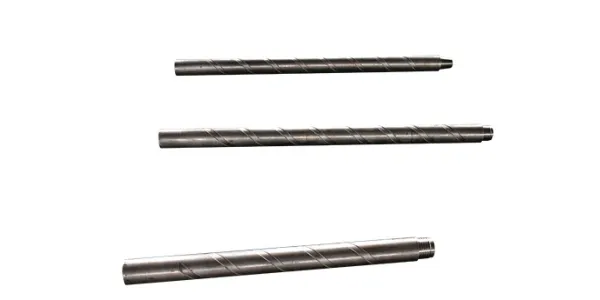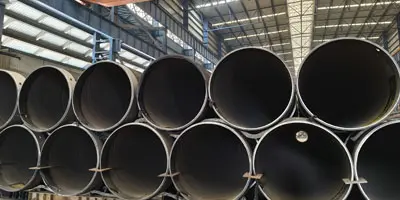Introduction to non-magnetic drill collars
Non-magnetic drill collars are low-magnetic tools specially used in oil drilling and other drilling projects. They are made of low-carbon high-manganese alloy steel. Through strict chemical composition ratio and refining process, and after forging treatment, non-magnetic drill collars have achieved excellent mechanical properties. Its unique properties include good low magnetic permeability, high-strength mechanical properties, excellent intergranular corrosion cracking resistance and excellent wear resistance. When the magnetic field intensity is 1×10^5/4 TA/m, the relative magnetic permeability of non-magnetic drill collars does not exceed 1.010. In addition, the magnetic induction intensity gradient of non-magnetic drill collars along the inner hole at any distance of 100mm does not exceed 0.05μT. These characteristics give non-magnetic drill collars great advantages in drilling projects.
The role of non-magnetic drill collars
In drilling projects, accurate borehole trajectory measurement is one of the important factors to ensure the success of drilling operations. Non-magnetic drill collars need to be used with drill pipes. Drill pipes are usually used to connect non-magnetic drill collars to drilling rigs and lower them to the wellhead for operation. However, all magnetic measuring instruments mainly rely on the induction of the earth's magnetic field when measuring the direction of the wellbore. If the drilling tool itself is magnetic, it will interfere with the measuring instrument and make it impossible to obtain accurate measurement data. Therefore, during the drilling process, a non-magnetic environment must be created to ensure the accuracy of the measuring instrument.

Non-magnetic drill collars are designed to solve this problem. They not only have all the mechanical properties of drill collars, but their low magnetic permeability also ensures that they will not interfere with magnetic measuring instruments during use. By using non-magnetic drill collars, it can be ensured that the measuring instruments measure the real geomagnetic field information in the downhole environment, thereby obtaining accurate wellbore trajectory data. This is of great significance for improving the accuracy and safety of drilling operations.
Working principle of non-magnetic drill collars
Non-magnetic drill collars are usually made of seamless steel pipes. This type of drill collar is mainly used for drilling in working environments where magnetic materials need to be excluded, such as aerospace, nuclear power and other industries. They are usually made of high-quality seamless steel pipes to ensure that they have good corrosion and wear resistance while maintaining their structural strength and stability.
The working principle of non-magnetic drill collars can be explained by the following schematic diagram:
Geomagnetic field lines: Geomagnetic field lines are the manifestation of the earth's magnetic field in the downhole environment.
Magnetic measuring instrument: An instrument used to measure the trajectory of the wellbore, which relies on the induction of the geomagnetic field.
Steel drill collar: Traditional steel drill collars have strong magnetism and will interfere with the measuring instruments.
Interfering magnetic field lines: The magnetic field lines generated by steel drill collars will interfere with magnetic measuring instruments.
Drill bit joint: The part that connects the drill bit and the drill collar.
Non-magnetic drill collar: After using the non-magnetic drill collar, the interfering magnetic field lines above and below it will not affect the measuring instrument.
Through the above principle, the non-magnetic drill collar creates a non-magnetic environment for magnetic measuring instruments, ensuring that the data obtained by the measuring instruments are true geomagnetic field information. This not only improves the accuracy of wellbore trajectory measurement, but also reduces the risks and costs that may be caused by measurement errors during the drilling process.
Application examples of non-magnetic drill collars
Oil drilling
In the process of oil drilling, accurate borehole trajectory measurement is of great significance for optimizing oil reservoir exploitation. The use of non-magnetic drill collars can effectively avoid the interference of the drilling tool's own magnetism on the measuring instrument, thereby obtaining accurate borehole trajectory data. This plays an important role in improving drilling efficiency and reducing drilling costs.
Geothermal drilling
Geothermal drilling requires deep exploration of the earth's crust to obtain thermal energy resources, and accurate borehole trajectory measurement is also crucial. The low magnetic permeability characteristics of non-magnetic drill collars have also made them widely used in geothermal drilling. By using non-magnetic drill collars, the accuracy of borehole trajectory measurement can be ensured and the efficiency of geothermal resource exploitation can be improved.
Mining
In mining, the accuracy of borehole trajectory directly affects the mining efficiency and safety of the mine. The application of non-magnetic drill collars can ensure that the measuring instrument obtains real geomagnetic field data, thereby providing accurate borehole trajectory information for mining and reducing risks in the mining process.
Conclusion
As a low-magnetic, high-strength drilling tool, non-magnetic drill collars have been widely used in oil drilling, geothermal drilling, and mining due to their unique chemical composition and excellent mechanical properties. By providing a non-magnetic environment for magnetic measuring instruments, non-magnetic drill collars ensure the accuracy of wellbore trajectory measurement, thereby improving the efficiency and safety of drilling projects.






 English
English Español
Español بالعربية
بالعربية











 Phone :
Phone :  Whatsapp :
Whatsapp :  Email :
Email : 


